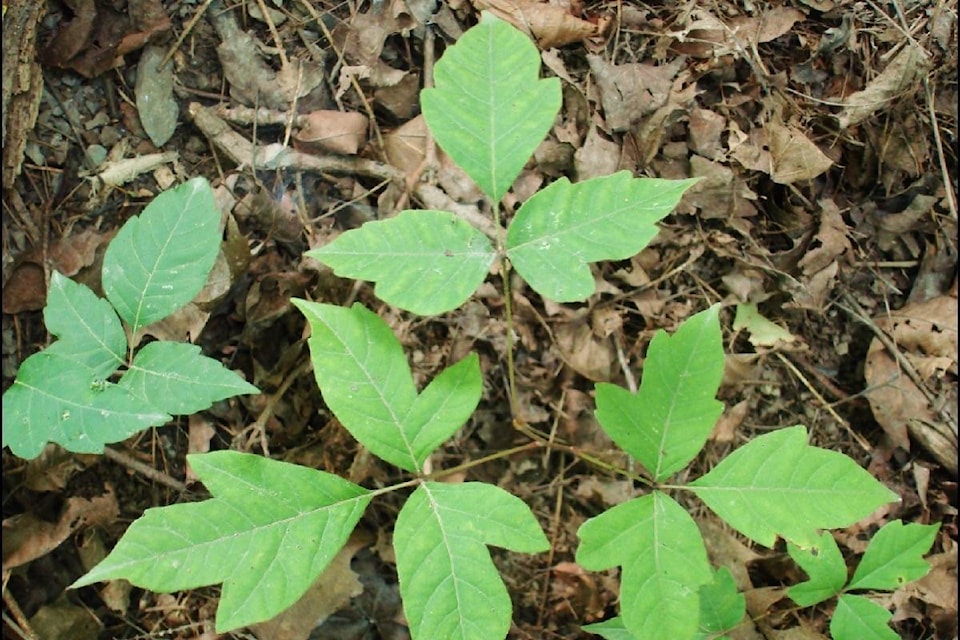A few cases of poison ivy crop up in City of Trail parks each year.
This summer the invasive plant was found close to the spray park at Gyro Park.
Mark Stephens, grounds/roads superintendent, says the city’s flower bed contractor notified staff of the location of a small patch of poison ivy last week.
The area was cordoned off before the poison ivy was dug up and disposed of Wednesday.
The trademarks of this plant are solid green, pointed leaves that hang from the stem in groups of three.
Contact with the plant’s sticky oil called urushiol (“yoo-ROO-shee-all) can cause a red, itchy rash called allergic contact dermatitis.
Treatment varies depending upon severity, but can include calamine lotion and oral antihistamines to relieve itching in addition to soaking the area in cool water.
HealthlinkBC info here: Poison ivy, oak or sumac
Look but don’t touch: Eight toxic plants in Canadian gardens
